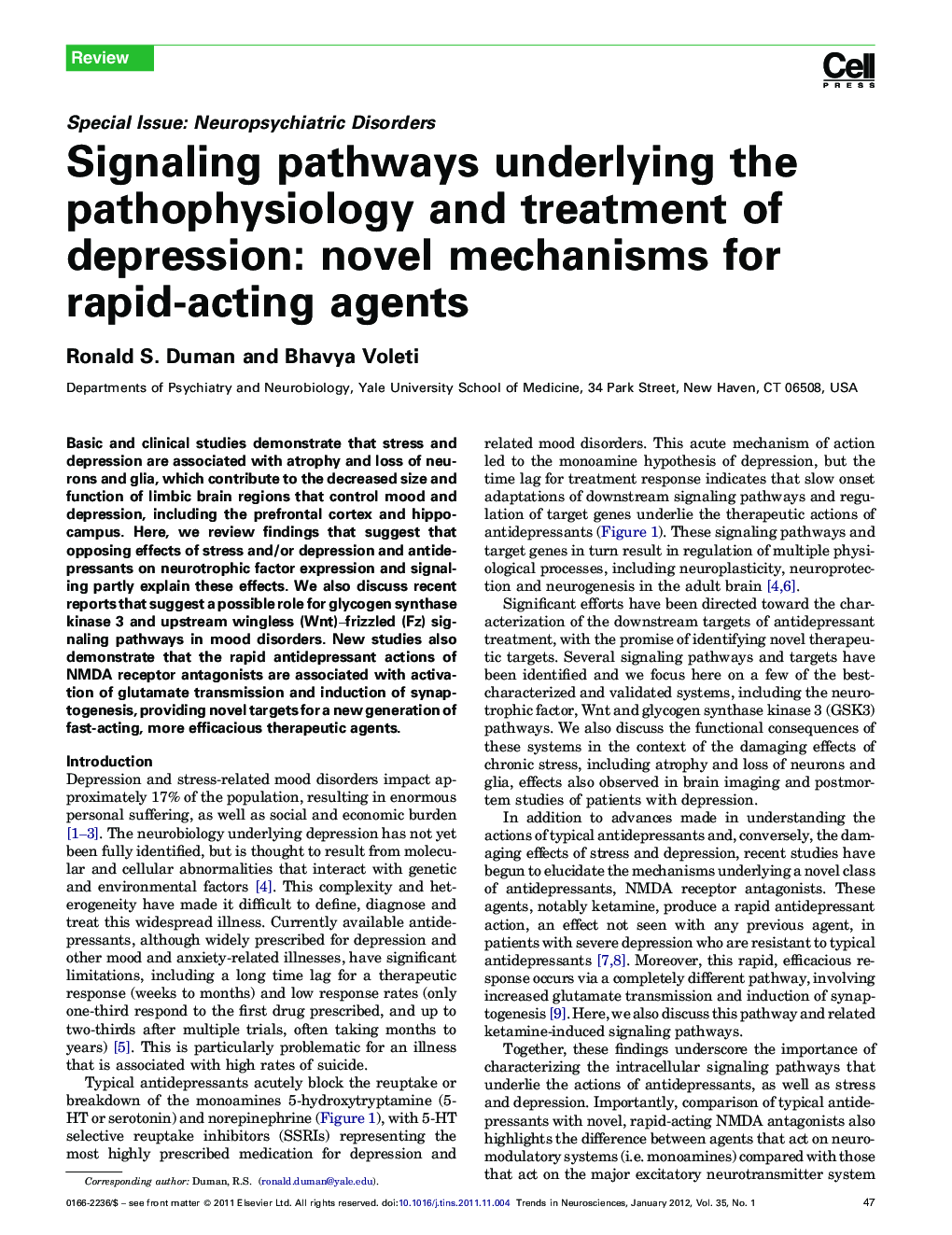| Article ID | Journal | Published Year | Pages | File Type |
|---|---|---|---|---|
| 4354411 | Trends in Neurosciences | 2012 | 10 Pages |
Basic and clinical studies demonstrate that stress and depression are associated with atrophy and loss of neurons and glia, which contribute to the decreased size and function of limbic brain regions that control mood and depression, including the prefrontal cortex and hippocampus. Here, we review findings that suggest that opposing effects of stress and/or depression and antidepressants on neurotrophic factor expression and signaling partly explain these effects. We also discuss recent reports that suggest a possible role for glycogen synthase kinase 3 and upstream wingless (Wnt)–frizzled (Fz) signaling pathways in mood disorders. New studies also demonstrate that the rapid antidepressant actions of NMDA receptor antagonists are associated with activation of glutamate transmission and induction of synaptogenesis, providing novel targets for a new generation of fast-acting, more efficacious therapeutic agents.
